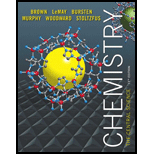
Chemistry: The Central Science (13th Edition)
13th Edition
ISBN: 9780321910417
Author: Theodore E. Brown, H. Eugene LeMay, Bruce E. Bursten, Catherine Murphy, Patrick Woodward, Matthew E. Stoltzfus
Publisher: PEARSON
expand_more
expand_more
format_list_bulleted
Concept explainers
Textbook Question
Chapter 7, Problem 11E
You might have expected that the elements would have been discovered in order of their relative abundance in the Earth's crust(Figure 1.6), but this is not the case. Suggest a general reason.
Expert Solution & Answer
Want to see the full answer?
Check out a sample textbook solution
Students have asked these similar questions
An alloy contains 10.8 % titanium by mass and has a density of 13.98 g/cm3. Titanium-49 has an isotopic abundance 6.82 %. Calculate the volume (cm3) of alloy required that contains 8,926,980,280,926,177,000,000 atoms of titanium-49. Submit your answer with no units and to two decimal places.
The elements of group 4A show an interesting change in properties moving down the group. Give the name and chemical symbol of each element in the group and label it as a nonmetal, metalloid, or metal.
A new compound has the empirical formula GaCl2. Thissurprises some chemists who, based on the position of gallium in the periodic table, expect a chloride of gallium to have the formula GaCl3 or possibly GaCl. They suggest that the “GaCl2” is really Ga[GaCl4], in which the bracketed group behaves as a unit with a -1 charge. Suggest experiments to test this hypothesis
Chapter 7 Solutions
Chemistry: The Central Science (13th Edition)
Ch. 7.3 - Prob. 7.1.1PECh. 7.3 - Prob. 7.1.2PECh. 7.3 - Prob. 7.2.1PECh. 7.3 - Prob. 7.2.2PECh. 7.3 - Prob. 7.3.1PECh. 7.3 - Prob. 7.3.2PECh. 7.3 - Prob. 7.4.1PECh. 7.3 - Prob. 7.4.2PECh. 7.4 - Prob. 7.5.1PECh. 7.4 - Prob. 7.5.2PE
Ch. 7.4 - Prob. 7.6.1PECh. 7.4 - The atomic masses of hydrogen-2 (deuterium),...Ch. 7.4 - Prob. 7.7.1PECh. 7.4 - Prob. 7.7.2PECh. 7.6 - Prob. 7.8.1PECh. 7.6 - Prob. 7.8.2PECh. 7.6 - Prob. 7.9.1PECh. 7.6 - Prob. 7.9.2PECh. 7.7 - Prob. 7.10.1PECh. 7.7 - Prob. 7.10.2PECh. 7 - Prob. 1DECh. 7 - Prob. 1ECh. 7 - Prob. 2ECh. 7 - Prob. 3ECh. 7 - Prob. 4ECh. 7 - Prob. 5ECh. 7 - Prob. 6ECh. 7 - Prob. 7ECh. 7 - Prob. 8ECh. 7 - Prob. 9ECh. 7 - Prob. 10ECh. 7 - You might have expected that the elements would...Ch. 7 - Prob. 12ECh. 7 - (a) What is meant by the term effective nuclear...Ch. 7 - Prob. 14ECh. 7 - Prob. 15ECh. 7 - Prob. 16ECh. 7 - Prob. 17ECh. 7 - Prob. 18ECh. 7 - Prob. 19ECh. 7 - Why does the quantum mechanical description or...Ch. 7 - Prob. 21ECh. 7 - Prob. 22ECh. 7 - Prob. 23ECh. 7 - Prob. 24ECh. 7 - Prob. 25ECh. 7 - Prob. 26ECh. 7 - Prob. 27ECh. 7 - Prob. 28ECh. 7 - Prob. 29ECh. 7 - Prob. 30ECh. 7 - Prob. 31ECh. 7 - Prob. 32ECh. 7 - Prob. 33ECh. 7 - Prob. 34ECh. 7 - Prob. 35ECh. 7 - In the ionic compounds LiF, NaCl, KBr, and RbI,...Ch. 7 - Prob. 37ECh. 7 - Prob. 38ECh. 7 - Prob. 39ECh. 7 - Prob. 40ECh. 7 - Prob. 41ECh. 7 - Prob. 42ECh. 7 - Prob. 43ECh. 7 - Prob. 44ECh. 7 - Prob. 45ECh. 7 - Prob. 46ECh. 7 - Prob. 47ECh. 7 - Prob. 48ECh. 7 - Prob. 49ECh. 7 - Prob. 50ECh. 7 - 7.51 Although the electron affinity ofbromineis a...Ch. 7 - Prob. 52ECh. 7 - Prob. 53ECh. 7 - Prob. 54ECh. 7 - Prob. 55ECh. 7 - Prob. 56ECh. 7 - Prob. 57ECh. 7 - Prob. 58ECh. 7 - Prob. 59ECh. 7 - Prob. 60ECh. 7 - Prob. 61ECh. 7 - Prob. 62ECh. 7 - Prob. 63ECh. 7 - Prob. 64ECh. 7 - Prob. 65ECh. 7 - Why does xenon form stable compounds with...Ch. 7 - Prob. 67ECh. 7 - Prob. 68ECh. 7 - Prob. 69ECh. 7 - Prob. 70ECh. 7 - Prob. 71ECh. 7 - Prob. 72ECh. 7 - Prob. 73ECh. 7 - Prob. 74ECh. 7 - Prob. 75ECh. 7 - Prob. 76ECh. 7 - Prob. 77ECh. 7 - Prob. 78ECh. 7 - Prob. 79AECh. 7 - Prob. 80AECh. 7 - Prob. 81AECh. 7 - Prob. 82AECh. 7 - Prob. 83AECh. 7 - Prob. 84AECh. 7 - Prob. 85AECh. 7 - Prob. 86AECh. 7 - Prob. 87AECh. 7 - Prob. 88AECh. 7 - Prob. 89AECh. 7 - Prob. 90AECh. 7 - Prob. 91AECh. 7 - Write a chemical formula for each compound or ion,...Ch. 7 - Prob. 93AECh. 7 - Prob. 94AECh. 7 - Prob. 95AECh. 7 - Prob. 96AECh. 7 - Prob. 97AECh. 7 - Prob. 98AECh. 7 - Prob. 99AECh. 7 - Prob. 100AECh. 7 - Prob. 101AECh. 7 - Prob. 102AECh. 7 - Prob. 103AECh. 7 - Prob. 104AECh. 7 - Prob. 105AECh. 7 - Prob. 106AECh. 7 - Prob. 107AECh. 7 - Prob. 108AECh. 7 - Prob. 109AECh. 7 - Prob. 110IECh. 7 - Prob. 111IECh. 7 - Prob. 112IECh. 7 - Prob. 113IECh. 7 - Prob. 114IECh. 7 - Prob. 115IE
Knowledge Booster
Learn more about
Need a deep-dive on the concept behind this application? Look no further. Learn more about this topic, chemistry and related others by exploring similar questions and additional content below.Similar questions
- 2.95 Engineers who design bicycle frames are familiar with the densities of aluminium (2.699 g/cm3), steel (7.87 g/cm3), and titanium (4.507 g/cm3). How does this information compare with Figure 2.12, and what would it suggest for changes in this figure if more shades were used for the density colour-coding? (Iron is the principal component of steel)arrow_forwardName and give symbols for three transition metals in the fourth period. Look up each of your choices in a dictionary, a book such as The Handbook of Chemistry and Physics, or on the Internet, and make a list of their properties. Also list the uses of each element.arrow_forwardA materials engineer has filed for a patent for a new alloy to be used in golf club heads. The composition by mass ranges from 25 to 31% manganese, 6.3 to 7.8% aluminum, 0.65 to 0.85% carbon, and 5.5 to 9.0% chromium, with the remainder being iron. What are the maximum and minimum percentages of iron possible in this alloy? Use Figure 2.12 to snake a prediction about how the density of this alloy would compare with that of iron; justify your prediction.arrow_forward
- The elements of Group 1-B (Cu, Ag, and Au) are sometimes referred to as the “coinage metals.” Why? What properties do they have that make them particularly useful for this purpose?arrow_forwardCopper: (a) Suppose you have a cube of copper metal that is 0.236 cm on a side with a mass of 0.1206 g. If you know that each copper atom (radius = 128 pm) has a mass of 1.055 1022 g (you will learn in Chapter 2 how to find the mass of one atom), how many atoms are there in this cube? What fraction of the cube is filled with atoms? (Or conversely, how much of the lattice is empty space?) Why is there empty space in the lattice? (b) Now look at the smallest, repeating unit of the crystal lattice of copper. Knowing that an edge of this cube is 361.47 pm and the density of copper is 8.960 g/cm3, calculate the number of copper atoms in this smallest, repeating unit.arrow_forwardIn Groups 4A-6A, there are several elements whose symbols begin with S. Name these elements, and for each one give its symbol, atomic number, group number, and period. Describe each as a metal, metalloid, or nonmetal.arrow_forward
arrow_back_ios
arrow_forward_ios
Recommended textbooks for you
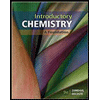 Introductory Chemistry: A FoundationChemistryISBN:9781337399425Author:Steven S. Zumdahl, Donald J. DeCostePublisher:Cengage Learning
Introductory Chemistry: A FoundationChemistryISBN:9781337399425Author:Steven S. Zumdahl, Donald J. DeCostePublisher:Cengage Learning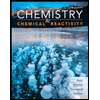 Chemistry & Chemical ReactivityChemistryISBN:9781337399074Author:John C. Kotz, Paul M. Treichel, John Townsend, David TreichelPublisher:Cengage Learning
Chemistry & Chemical ReactivityChemistryISBN:9781337399074Author:John C. Kotz, Paul M. Treichel, John Townsend, David TreichelPublisher:Cengage Learning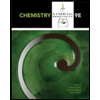 Chemistry & Chemical ReactivityChemistryISBN:9781133949640Author:John C. Kotz, Paul M. Treichel, John Townsend, David TreichelPublisher:Cengage Learning
Chemistry & Chemical ReactivityChemistryISBN:9781133949640Author:John C. Kotz, Paul M. Treichel, John Townsend, David TreichelPublisher:Cengage Learning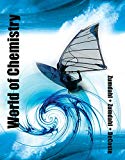 World of Chemistry, 3rd editionChemistryISBN:9781133109655Author:Steven S. Zumdahl, Susan L. Zumdahl, Donald J. DeCostePublisher:Brooks / Cole / Cengage Learning
World of Chemistry, 3rd editionChemistryISBN:9781133109655Author:Steven S. Zumdahl, Susan L. Zumdahl, Donald J. DeCostePublisher:Brooks / Cole / Cengage Learning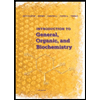 Introduction to General, Organic and BiochemistryChemistryISBN:9781285869759Author:Frederick A. Bettelheim, William H. Brown, Mary K. Campbell, Shawn O. Farrell, Omar TorresPublisher:Cengage Learning
Introduction to General, Organic and BiochemistryChemistryISBN:9781285869759Author:Frederick A. Bettelheim, William H. Brown, Mary K. Campbell, Shawn O. Farrell, Omar TorresPublisher:Cengage Learning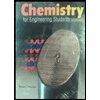 Chemistry for Engineering StudentsChemistryISBN:9781337398909Author:Lawrence S. Brown, Tom HolmePublisher:Cengage Learning
Chemistry for Engineering StudentsChemistryISBN:9781337398909Author:Lawrence S. Brown, Tom HolmePublisher:Cengage Learning

Introductory Chemistry: A Foundation
Chemistry
ISBN:9781337399425
Author:Steven S. Zumdahl, Donald J. DeCoste
Publisher:Cengage Learning

Chemistry & Chemical Reactivity
Chemistry
ISBN:9781337399074
Author:John C. Kotz, Paul M. Treichel, John Townsend, David Treichel
Publisher:Cengage Learning

Chemistry & Chemical Reactivity
Chemistry
ISBN:9781133949640
Author:John C. Kotz, Paul M. Treichel, John Townsend, David Treichel
Publisher:Cengage Learning

World of Chemistry, 3rd edition
Chemistry
ISBN:9781133109655
Author:Steven S. Zumdahl, Susan L. Zumdahl, Donald J. DeCoste
Publisher:Brooks / Cole / Cengage Learning

Introduction to General, Organic and Biochemistry
Chemistry
ISBN:9781285869759
Author:Frederick A. Bettelheim, William H. Brown, Mary K. Campbell, Shawn O. Farrell, Omar Torres
Publisher:Cengage Learning

Chemistry for Engineering Students
Chemistry
ISBN:9781337398909
Author:Lawrence S. Brown, Tom Holme
Publisher:Cengage Learning
NEET Chemistry | Group 14 Carbon Family | Theory & Problem Solving | In English | Misostudy; Author: Misostudy;https://www.youtube.com/watch?v=enOGIrcHh54;License: Standard YouTube License, CC-BY